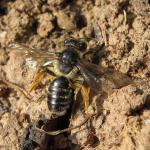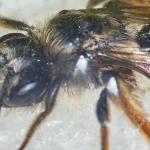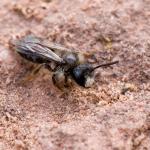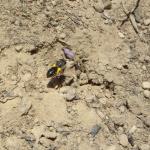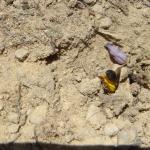Small bees encountered in the flowers of tormentils (Potentilla spp.) on heaths and moorland should be examined closely as they may include this interesting species (the only British Andrena female to have a tridentate mandible, rather than a uni- or bidentate one). The male is one of a small number of British species to have a largely yellow clypeus.
Widely distributed throughout Britain as far north as West Sutherland (Inchnadamph (Loch Assynt)), East Sutherland (Golspie) and the Outer Hebrides (South Uist). In Ireland it has been recorded sporadically from Kerry, Wicklow, Galway, Mayo and Donegal (Stelfox 1927). It has been found on the Isle of Man but not in the Channel Islands. Generally a scarce species, only rarely locally common. A northern European bee, becoming scarcer further south. Stöckhert (1933) describes it as being a boreal-alpine species. The range extends from central Fennoscandia south to Spain, and eastwards to the former Czechoslovakia and USSR.
This bee is not regarded as being scarce or threatened.
More images and descriptive notes are available on Steven Falk's Flickr pages here
Heathlands and moorlands; rarely open woodland. Present in a wide variety of habitats. Nests are usually made in areas of vertical or sloping bare ground with a southern aspect. No other habitat limitations known.
Univoltine; mid June to late August.
Apparently nests in compact aggregations (Perkins 1919), though these are very rarely encountered.
Bramble (Rubus spp.), harebell (Campanula rotundifolia), heather (Calluna vulgaris), wild angelica (Angelica sylvestris) and yarrow (Achillea millefolium).
Nomada roberjeotiana is a cleptoparasite of this species (Perkins 1919). Stylopized specimens of A. tarsata have not been found.
2005


